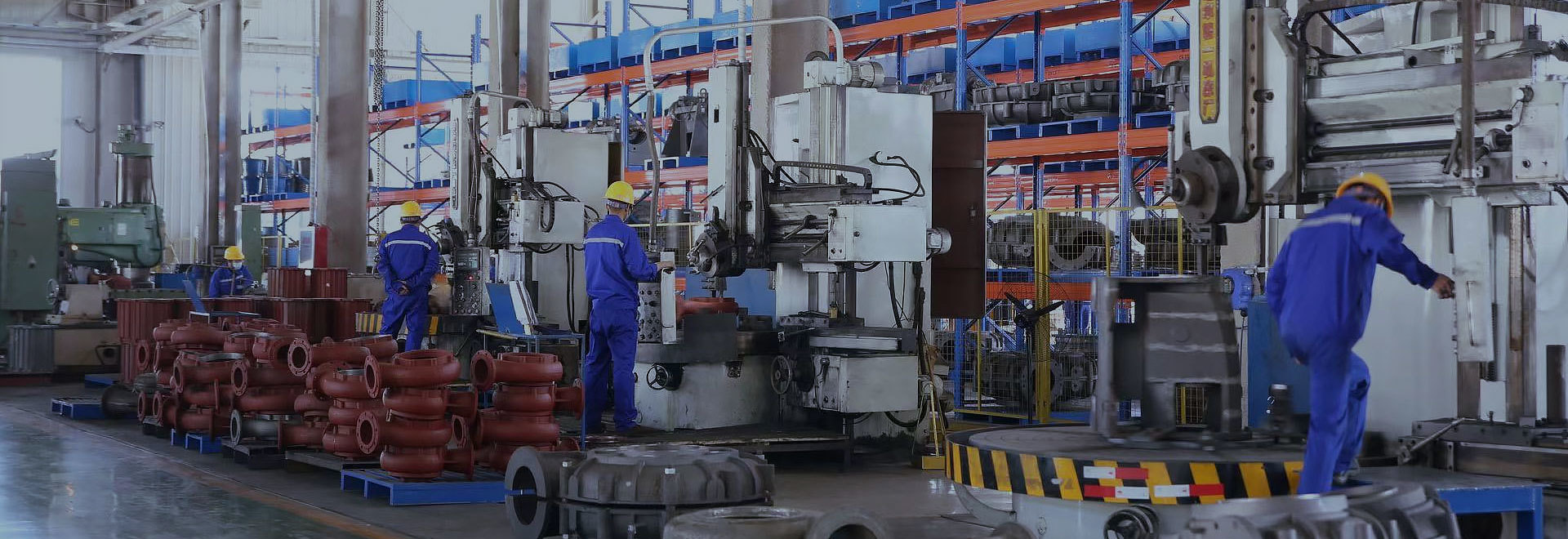Solutions from professional pump manufacturers: Shanglishi teaches you how to scientifically prevent water pump cavitation.
Published:
Oct 27,2025
Cavitation in pumps occurs when the local pressure inside the pump drops below the saturation vapor pressure of the liquid, causing bubbles to form. These bubbles then collapse in high-pressure regions, leading to vibrations, noise, and reduced pump performance. To effectively prevent cavitation, comprehensive control is required across multiple dimensions, including design selection, installation configuration, operational regulation, and maintenance management.

Pump cavitation It refers to the phenomenon where, when the local pressure inside the pump drops below the liquid's saturation vapor pressure, bubbles form within the liquid. These bubbles then collapse in high-pressure regions, causing vibrations, noise, and a decline in performance. To effectively prevent cavitation, It requires comprehensive control across multiple dimensions, including design selection, installation and configuration, operational regulation, and maintenance management.

Select pump models with excellent cavitation resistance:
When selecting a pump, priority should be given to low specific-speed pumps (such as centrifugal pumps). These pumps feature smoother impeller inlet passages, which help reduce local flow velocities and thereby suppress cavitation. Additionally, pumps specifically designed for cavitation conditions—such as self-priming pumps or gas-liquid transfer pumps—can also be considered. These specialized pumps are capable of operating reliably in gas-containing media, significantly minimizing the impact of bubble collapse on the impeller.
Optimizing impeller structural parameters:
When designing, increase the impeller inlet diameter and enlarge the inlet passage cross-sectional area to reduce the inlet flow velocity. Additionally, employ a double-suction impeller (where liquid enters the impeller from both sides) to distribute the inlet flow, thereby minimizing the flow velocity and pressure drop on a single side. Finally, incorporate rounded edges at the impeller inlet rim to prevent localized vortices that could cause sudden pressure drops.
Properly determining the pump's Net Positive Suction Head (NPSH):
The pump selection must meet the following cavitation safety conditions: the required net positive suction head (NPSHr) must be lower than the available net positive suction head (NPSHa), and an additional safety margin of 0.5 to 1 meter should be maintained above NPSHa. In practical calculations, it is also essential to comprehensively account for both frictional and minor losses in the piping system, ensuring that the effective pressure at the pump inlet remains higher than the minimum pressure required to prevent cavitation under all operating conditions.

Properly determining the pump installation height:
Installation height is key to preventing cavitation, and the vertical distance between the pump shaft centerline and the liquid surface in the suction tank—known as the geometric installation height—must be strictly controlled. For common liquids like clean water, the installation height should be kept below the allowable net positive suction head (NPSH), ensuring that the inlet pressure does not drop too low due to excessive height.
If transporting high-temperature or volatile liquids (such as hot water), the installation height should be further reduced, as the liquid's saturation vapor pressure increases with rising temperature, making it easier to reach cavitation conditions.
Optimizing the suction pipeline design:
The diameter of the suction pipeline should be no smaller than the pump inlet diameter, and its length should be kept as short as possible to minimize local resistance components such as elbows and valves (e.g., a 90° elbow creates significantly more resistance than a 45° elbow, so the latter should be preferred). Additionally, the inner walls of the pipeline must be smooth to prevent increased frictional resistance caused by rust or scaling. Finally, install the end of the suction pipe Bottom valve At this time, the submergence depth of the bottom valve should be greater than 2 times the pipe diameter to prevent air intake.
Avoid air intake in the suction line:
During installation and operation, ensure that all flanges and joints in the suction piping are tightly sealed to prevent any air from leaking in. Once air enters, it will significantly reduce the effective pressure of the liquid, potentially triggering or exacerbating cavitation. Additionally, the liquid level in the suction sump should always be maintained above the inlet of the suction pipe, effectively avoiding "cavitation" or "emptying." To achieve stable control, it is recommended to install a complementary liquid-level monitoring and interlocking system that enables real-time monitoring and adjustment of the liquid level.

Control the pump's operating parameters:
Avoid operating the pump under conditions exceeding its rated flow, as excessive flow can cause a sharp increase in impeller inlet velocity and a significant drop in pressure, potentially triggering cavitation. If the actual flow requirement is lower than the rated flow, adjust the outlet valve (rather than the inlet valve) to control the flow rate, preventing the inlet valve from restricting flow and causing localized pressure reduction.
Stable liquid delivery conditions:
Control the temperature of the liquid being conveyed to prevent overheating, which could lead to a rise in saturation vapor pressure. (For example, when transporting water, if the temperature increases from 20°C to 80°C, the saturation vapor pressure rises dramatically—from 2.3 kPa to 47.3 kPa—significantly increasing the risk of cavitation.)
If the liquid contains gases (such as dissolved oxygen), a degassing device (like a vacuum degasser) should be installed upstream of the suction line to reduce the gas content in the liquid.
Real-time monitoring of operating status:
During operation, it is essential to closely monitor the vibration and noise levels of the pump. Cavitation typically produces a high-frequency "crackling" sound, and the main frequency of vibration usually falls within the range of 1,000–5,000 Hz. Therefore, it is recommended to install vibration sensors and noise detectors for real-time monitoring. At the same time, the pump's outlet pressure and flow rate should be monitored simultaneously. If sudden pressure drops or significant fluctuations in flow are detected, these could be early signs of cavitation, and the pump should be immediately shut down for inspection.

Regularly inspect the impeller for wear:
Cavitation can cause honeycomb-like pitting on the impeller surface. After wear occurs, the impeller应及时 repaired or replaced (during repair, wear-resistant welding rods can be used for buildup welding, or ceramic, tungsten carbide, and other anti-cavitation coatings can be applied via spraying to extend the impeller's service life). During inspection, if burrs or deformations are found at the impeller inlet edges, they should be carefully ground down to restore smooth flow passages.
Cleaning the pipeline and suction basin:
The following cleaning tasks should be performed regularly to prevent cavitation and wear:
Clear the suction line : Remove scale, sediment, and other blockages to ensure smooth pipeline flow and reduce flow resistance.
Silt Removal and Liquid Suction Pool : Clear the sediment at the bottom of the pool to prevent impurities from being drawn into the pump, thereby avoiding flow passage blockage and protecting the impeller from impact-induced wear.
Maintaining Sealing and Auxiliary Systems:
Inspect the sealing performance of mechanical seals and packing seals, and promptly replace any damaged components to prevent air leakage. For water pumps requiring seal water, ensure that the seal water pressure and flow remain stable, avoiding air entry into the pump due to insufficient seal water.

Select anti-cavitation base materials:
Cavitation can cause honeycomb-like pitting on the impeller surface. After wear occurs, the impeller应及时 repaired or replaced (during repair, wear-resistant welding rods can be used for buildup welding, or ceramic, tungsten carbide, and other anti-cavitation coatings can be applied via spraying to extend the impeller's service life). During inspection, if burrs or deformations are found at the impeller inlet edges, they should be carefully ground down to restore smooth flow passages.
Adopting surface enhancement techniques:
To enhance the localized cavitation resistance of pump components prone to cavitation (such as impellers and the inlet sections of pump casings), the following surface treatment techniques can be employed:
Coating Technology : Apply a high-performance protective coating to the component surface. Commonly used solutions include:
Tungsten Carbide Coating : Utilizing thermal spraying technology, the coating achieves a hardness of HV1000 or higher, exhibiting excellent resistance to wear and cavitation—making it particularly suitable for high-impact operating conditions.
Ceramic Coating : For instance, alumina coatings prepared via plasma spraying combine excellent corrosion resistance with high hardness, making them ideal for transporting corrosive media.
Nickel-based alloy coating For example, Inconel alloy coatings exhibit excellent toughness and can effectively cushion the micro-shocks generated by bubble collapse.
Surface Heat Treatment : By modifying the surface structure of components to enhance performance.
Surface Hardening : Implementing high-frequency quenching on the impeller can increase its surface hardness to HRC50 or higher.
Nitriding Treatment : A nitrided layer is formed on the component surface, offering high hardness, excellent wear resistance, and simultaneously enhancing corrosion resistance. It is suitable for materials such as stainless steel and alloy steel.
Surface polishing : Polish the surfaces of flow-through components such as impellers and flow passages to a roughness of less than Ra0.8 μm. A low-roughness surface minimizes bubble adhesion and collapse points, while also reducing flow resistance—indirectly helping to suppress cavitation.

Shanglishi Pump Group Since its establishment in 2006, it has has developed into an industry-leading with 4 major production bases, 10 branch companies, and over 20 representative offices. We have assembled over 500 professionals dedicated to providing high-quality slurry pump solutions to customers worldwide.
Our products are specifically designed to handle highly abrasive materials, Can be adapted to various complex operating conditions. Precision Customization It is now exported to numerous countries and regions, including the United States, Brazil, Russia, Indonesia, South Africa, and the Middle East, offering a wide variety of products characterized by high quality, superior productivity, and cutting-edge technical expertise. Consistently meeting the diverse needs of different customers.

END
Keyword:
Pump cavitation,Slurry pump,Shanglishi Pump Industry
SHANGLISHI PUMP GROUP
Department Director: Ms. Wang
Tel: +86-311-82725800/82725629
Email: admin@sls-pump.com
WhatsApp: +86 15830676372
Mobile Website

Mobile Website
Copyright © 2022 SHANGLISHI PUMP GROUP


